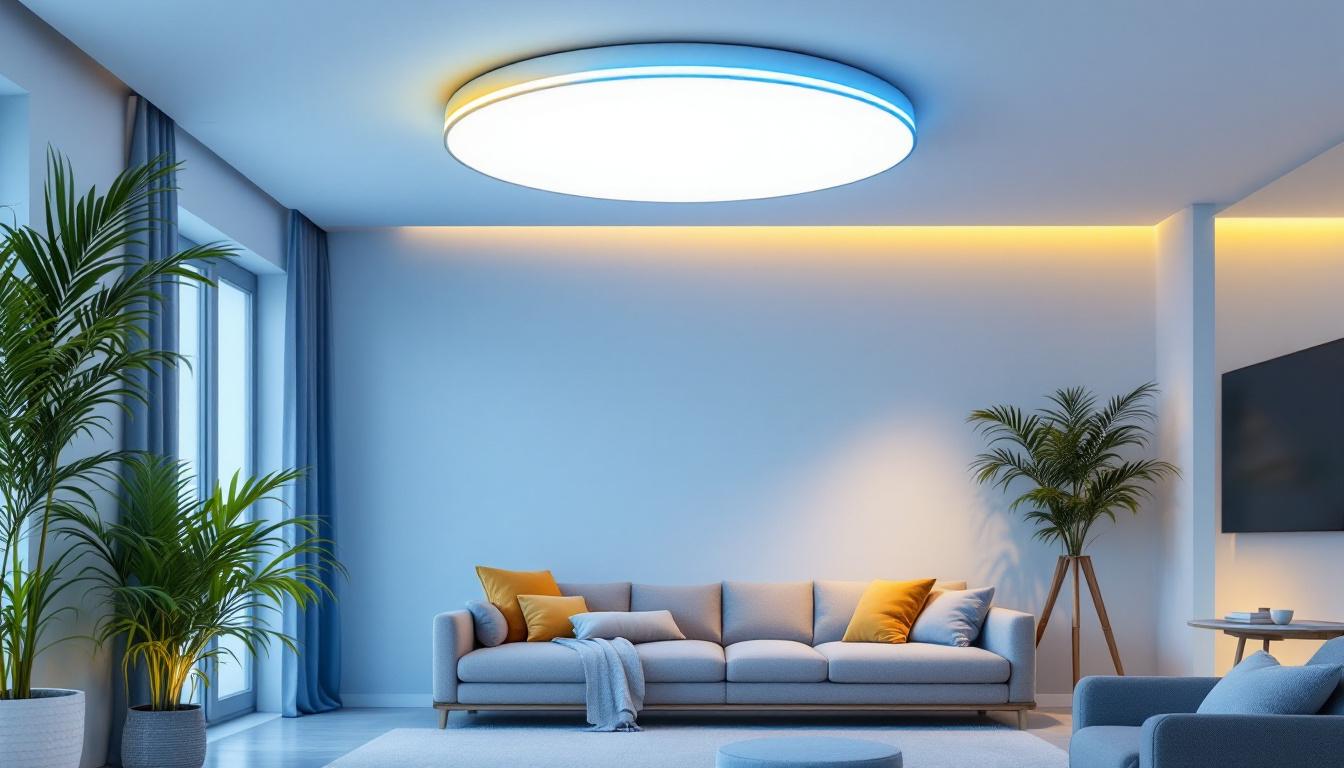
In the dynamic world of lighting contracting, professionals often face numerous challenges that can lead to costly mistakes. Understanding these common pitfalls is crucial for ensuring project success and maintaining a positive reputation in the industry. This article delves into some of the most frequent errors made by lighting contractors, providing insights and tips to avoid them.
One of the most significant mistakes lighting contractors can make is neglecting to plan thoroughly before starting a project. Proper planning encompasses various aspects, from understanding client needs to assessing site conditions and determining the right equipment.
Failing to fully grasp what the client envisions can lead to miscommunication and dissatisfaction. It’s essential to engage in detailed discussions with clients to clarify their expectations. This includes understanding the desired ambiance, functionality, and any specific requirements they might have. Additionally, contractors should consider the client’s budget and timeline, as these factors can greatly influence the choices made throughout the project. By establishing a clear line of communication and setting realistic goals, contractors can foster a collaborative environment that encourages feedback and adjustments along the way.
Every site presents unique challenges. Whether it’s dealing with existing infrastructure, environmental factors, or local regulations, a thorough assessment is vital. Lighting contractors should conduct site visits and evaluations to identify potential obstacles and plan accordingly. This may involve taking measurements, analyzing the surrounding landscape, and even consulting with other professionals, such as architects or engineers, to ensure a comprehensive understanding of the site. Furthermore, being aware of the local climate and how it affects lighting can help in selecting fixtures that are durable and suitable for the environment, ultimately leading to a more successful installation.
Another aspect of planning involves selecting the appropriate lighting fixtures and equipment. Contractors should consider factors such as energy efficiency, longevity, and compatibility with the overall design. Inadequate research can lead to poor choices that may affect the project’s success. Moreover, staying updated on the latest technological advancements in lighting can provide contractors with a competitive edge. For instance, incorporating smart lighting solutions can not only enhance the functionality of the space but also offer clients greater control over their lighting systems. By evaluating the full spectrum of available options and understanding the long-term benefits of each, contractors can make informed decisions that align with both the client’s vision and sustainability goals.
Safety should always be a top priority in any construction or installation project. Lighting contractors often overlook safety standards, which can lead to accidents and legal issues. Neglecting these standards not only endangers the workers on site but can also affect the safety of the end-users of the lighting systems. For instance, improperly installed fixtures may pose fire hazards or create electrical shocks, leading to severe injuries or even fatalities. Therefore, a culture of safety must be ingrained in every aspect of the project, from planning to execution.
Each region has specific regulations regarding electrical installations and lighting systems. Failing to comply with these standards can result in fines and project delays. Contractors must stay informed about local codes and ensure that their work meets all safety requirements. This includes understanding the National Electrical Code (NEC) in the United States or the International Electrotechnical Commission (IEC) standards globally. Regular audits and consultations with safety experts can help contractors navigate these complex regulations, ensuring that their projects not only meet legal requirements but also uphold the highest safety standards for the community.
Using improper installation techniques can compromise safety and functionality. It’s crucial for contractors to follow best practices for installation, including secure mounting, correct wiring, and appropriate use of protective gear. Training and continuous education can help mitigate this risk. Furthermore, utilizing advanced tools and technology can enhance the quality of installations. For example, employing laser levels for precise alignment or using circuit testers to verify electrical integrity can significantly reduce the likelihood of errors. Additionally, fostering a work environment that encourages open communication about safety concerns can empower workers to voice potential hazards before they escalate into serious issues.
Effective communication is the backbone of any successful project. In the lighting contracting industry, inadequate communication can lead to misunderstandings, errors, and project delays. The consequences of poor communication can ripple through the entire project lifecycle, affecting timelines, budgets, and ultimately, client satisfaction. It is crucial for all parties involved to recognize the importance of maintaining clear and consistent dialogue to mitigate these risks.
Within the contracting team, clear communication is essential. Team members should be encouraged to share updates, concerns, and ideas throughout the project. Regular meetings can help ensure everyone is on the same page and can address any issues that arise promptly. Additionally, utilizing collaborative tools and platforms can enhance communication, allowing team members to document progress and share insights in real-time. This not only fosters a culture of openness but also empowers team members to take ownership of their roles, leading to more innovative solutions and a more cohesive working environment.
Maintaining open lines of communication with clients is equally important. Regular updates on project progress, changes, and challenges help build trust and transparency. Contractors should also be receptive to client feedback and willing to make adjustments as necessary. Establishing a structured communication plan at the outset of a project can set clear expectations for both parties. This plan might include scheduled check-ins, progress reports, and a dedicated point of contact for any urgent inquiries. Furthermore, providing clients with visual aids, such as design mock-ups or progress photos, can greatly enhance their understanding of the project and foster a sense of involvement in the decision-making process.
The lighting industry is continually evolving, with new technologies emerging that can enhance efficiency and effectiveness. Ignoring these trends can put contractors at a disadvantage. As energy regulations become stricter and sustainability becomes a priority, staying updated with the latest advancements is crucial for maintaining a competitive edge. Failing to adapt can result in missed opportunities for innovation and growth, ultimately affecting a contractor’s reputation and bottom line.
Smart lighting systems offer numerous benefits, including energy savings and enhanced control. These systems can be programmed to adjust automatically based on occupancy or natural light levels, leading to significant reductions in energy consumption. Contractors should familiarize themselves with these technologies and consider integrating them into their projects. This not only meets modern client expectations but also positions contractors as forward-thinking professionals. Additionally, the integration of smart lighting can provide clients with the ability to control their lighting remotely through mobile apps, adding a layer of convenience and customization that is increasingly sought after in today’s market.
Design software can significantly streamline the planning and design process. By utilizing advanced tools, contractors can create accurate lighting layouts, simulate effects, and present ideas more effectively to clients. These software solutions often come equipped with features that allow for real-time adjustments and visualizations, making it easier to communicate concepts and secure client buy-in. Investing in such technology can improve project outcomes and client satisfaction. Furthermore, many design software platforms now include collaboration features, enabling contractors to work seamlessly with architects and interior designers, fostering a more integrated approach to project development that can lead to innovative lighting solutions tailored to specific environments.
Time and budget overruns are common issues in the contracting industry. Underestimating these factors can lead to stress, dissatisfaction, and financial losses.
Contractors should adopt accurate estimation techniques to ensure that time and budget projections are realistic. This includes considering all aspects of the project, such as labor, materials, and unforeseen challenges. Utilizing historical data from previous projects can aid in making more informed estimates.
Having a contingency plan is essential for managing unexpected issues that may arise during a project. Setting aside a portion of the budget for unforeseen expenses and allowing extra time for potential delays can help mitigate the impact of these challenges.
Once a lighting project is completed, the work is not over. Failing to follow up with clients can lead to missed opportunities for future work and referrals.
After installation, contractors should check in with clients to ensure they are satisfied with the results. This not only demonstrates professionalism but also provides valuable feedback that can be used to improve future projects.
Offering maintenance and support services can enhance client relationships. By providing assistance with any issues that arise post-installation, contractors can build trust and encourage repeat business.
In a competitive industry, effective marketing and branding are crucial for attracting new clients. Neglecting these aspects can hinder a contractor’s growth and visibility.
In today’s digital age, having a strong online presence is essential. Contractors should invest in a professional website and utilize social media platforms to showcase their work and engage with potential clients. This not only increases visibility but also establishes credibility.
Networking within the industry and seeking referrals from satisfied clients can significantly impact a contractor’s success. Building relationships with other professionals can lead to new opportunities and collaborations. Actively seeking feedback and testimonials can also enhance credibility and attract new business.
Avoiding common mistakes is vital for lighting contractors aiming to succeed in a competitive market. By focusing on thorough planning, adhering to safety standards, enhancing communication, embracing technology, accurately estimating time and budget, following up post-installation, and investing in marketing, contractors can significantly improve their project outcomes and client satisfaction.
Ultimately, learning from past experiences and continuously striving for improvement will position lighting contractors for long-term success in the industry. With diligence and a commitment to excellence, the path to becoming a reputable contractor is well within reach.
Don’t let common mistakes dim the success of your lighting projects. At LumenWholesale, we provide lighting contractors with the tools they need to shine. Our spec-grade lighting products not only meet the highest industry standards but are also available at unbeatable wholesale prices. Say goodbye to inflated markups and hello to reliable, high-performance lighting that keeps your projects on track and your clients satisfied. With free shipping on bulk orders, LumenWholesale is your go-to source for premium lighting without the premium price tag. Elevate your lighting game and experience the best value in wholesale lighting today.

Discover essential insights into outdoor lighting fixtures that every lighting contractor should know.

Discover the transformative potential of retractable ceiling lights with insights from top lighting contractors.

Discover essential insights into classroom lighting that every contractor needs to know.

Discover the transformative power of light scaling in lighting design.